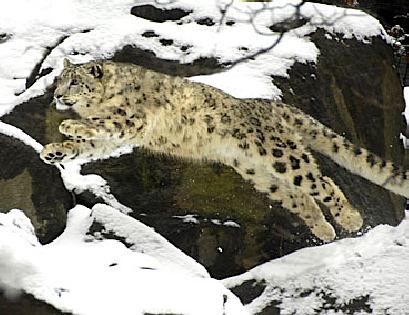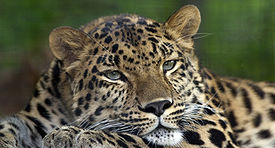 Hidden cameras have revealed the existence of a surprisingly healthy population of rare snow leopards living in the mountainous reaches of northeastern Afghanistan, according to a new study.
Hidden cameras have revealed the existence of a surprisingly healthy population of rare snow leopards living in the mountainous reaches of northeastern Afghanistan, according to a new study.
The discovery gives hope to the world’s most elusive big cat, which calls home to some of the world’s tallest mountains.
The Wildlife Conservation Society used camera traps to document the presence of snow leopards at 16 different locations across a wide landscape. The images represent the first such records of snow leopards in Afghanistan.
“This is a wonderful discovery – it shows that there is real hope for snow leopards in Afghanistan,” said Peter Zahler, WCS Deputy Director for Asia Programs.
 According to the study, snow leopards remain threatened in the region, due to poaching for their pelts and the capture of live animals for the illegal pet trade. In response, WCS has developed a set of conservation initiatives including partnerships with local communities, training of rangers, and education.
According to the study, snow leopards remain threatened in the region, due to poaching for their pelts and the capture of live animals for the illegal pet trade. In response, WCS has developed a set of conservation initiatives including partnerships with local communities, training of rangers, and education.
These initiatives are already paying off. Conservation education is now occurring in every school in the region. Fifty-nine rangers have been trained to monitor not only snow leopards but other species, and to enforce laws against poaching. Predator-proof livestock corrals have been constructed and a livestock insurance program now compensates shepherds, though surprisingly few livestock fall to predators in the region.
Since 2006, the U.S. Agency for International Development (USAID) has provided support to WCS to work in more than 55 communities across the Afghanistan and is training local people to monitor and sustainably manage their wildlife and other resources. One of the many successes of this project was the creation of the country’s first national park – Band-e-Amir – which is now co-managed by the government and a committee consisting of all 14 communities living around the park.
Snow leopards have declined by as much as 20 percent over the past 16 years and are considered endangered by the International Union for Conservation of Nature, though 4,500 to 7,500 snow leopards remain in the wild scattered across a dozen countries in Central Asia.



















